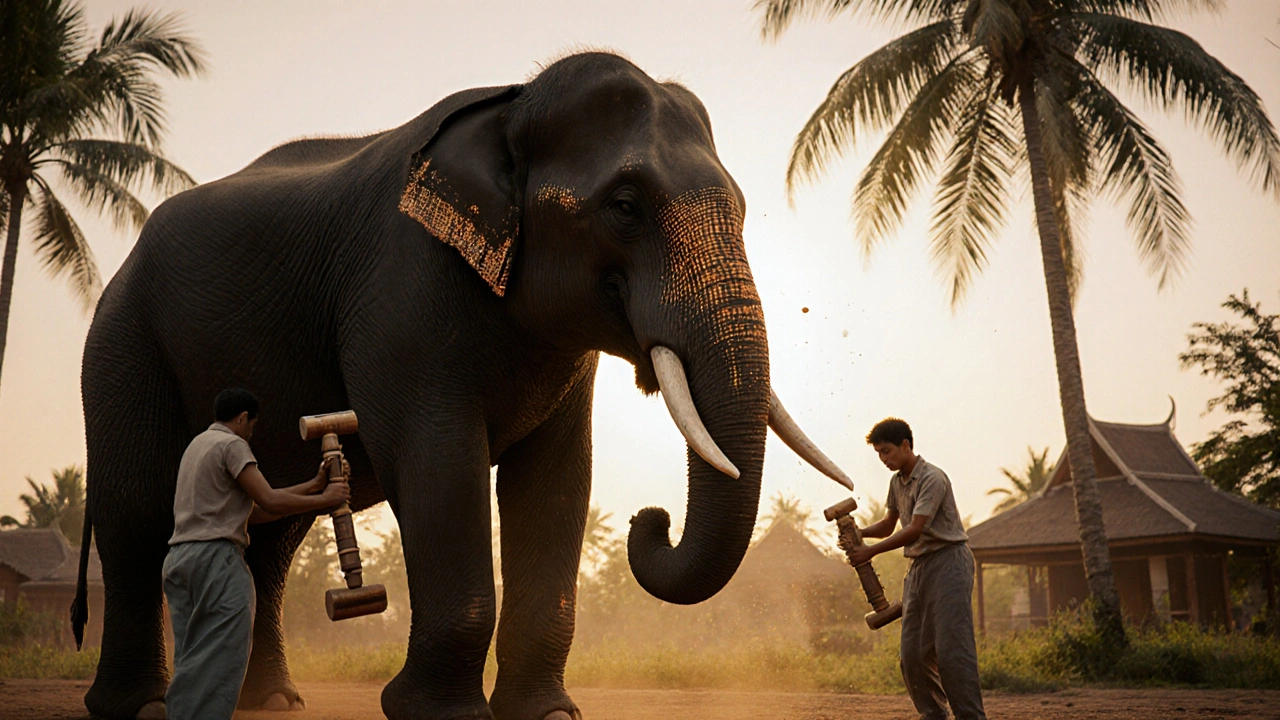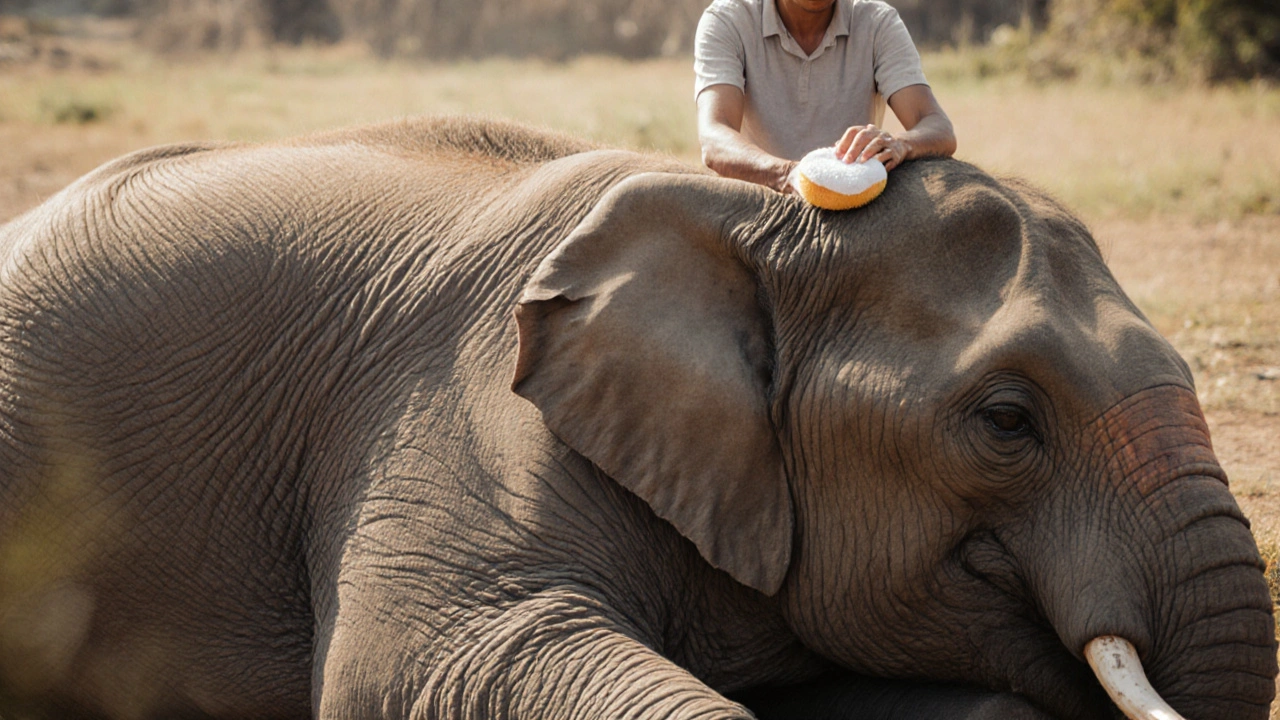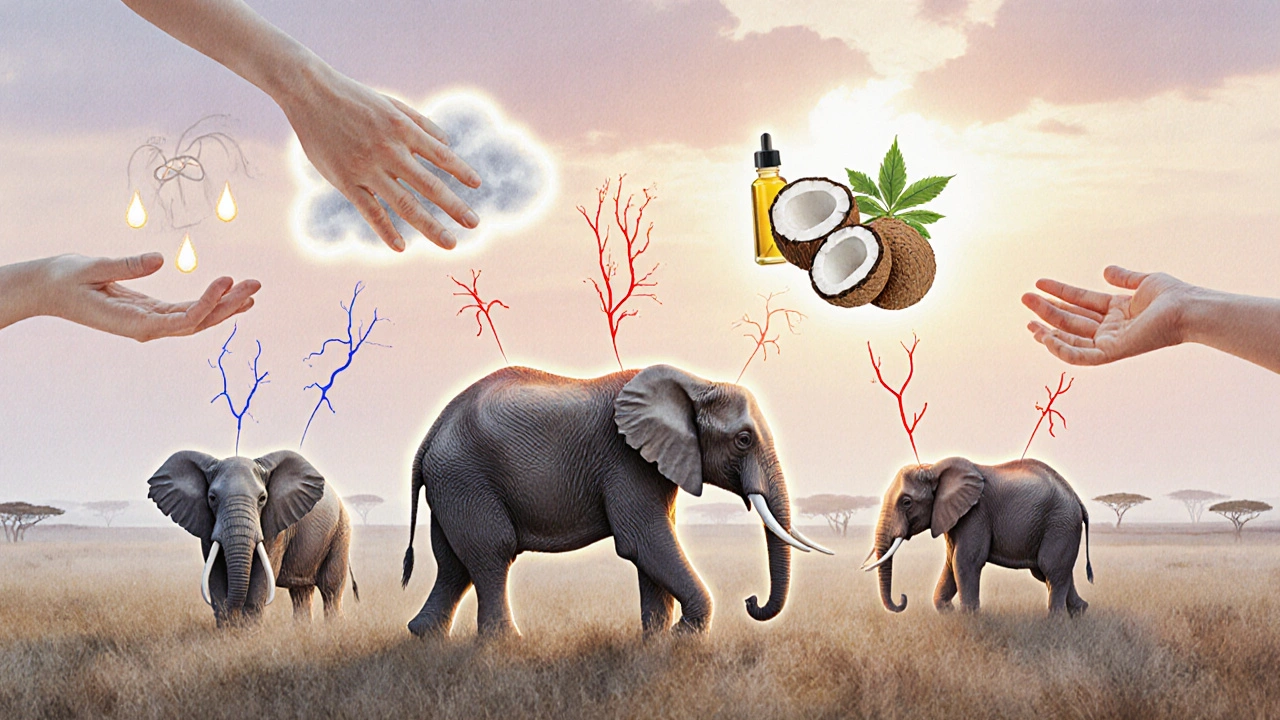Elephant Massage: How Touch Therapy Is Transforming Elephant Welfare

Elephant Massage Knowledge Quiz
How Much Do You Know About Elephant Massage?
Test your knowledge with this short quiz about elephant massage and welfare practices. All questions are based on the article "Elephant Massage: How Touch Therapy Is Transforming Elephant Welfare".
Results
Most people think of massage as something humans do to unwind after a long day. But in the quiet corners of wildlife sanctuaries across Thailand, Kenya, and even parts of North America, elephants are getting massages too-and the results are changing how we understand animal well-being.
Why Elephants Need Massage
Elephants are the largest land animals on Earth, weighing up to 6,000 kilograms. Their bodies carry immense weight, and their feet, joints, and backs endure constant pressure from walking miles daily-even in captivity. In zoos and rescue centers, many elephants spend hours standing on hard concrete, leading to chronic foot problems, arthritis, and muscle stiffness. Unlike in the wild, where they roam freely and mud-bathe regularly, captive elephants often lack natural movement and terrain variation.That’s where massage comes in. Trained handlers use slow, rhythmic pressure with their hands, forearms, and sometimes wooden rollers to ease tension in the thick skin and deep muscle layers. It’s not just about comfort. Studies from the Asian Elephant Foundation show that regular massage reduces lameness by up to 40% in elephants with joint degeneration. One 2023 report from the Elephant Sanctuary in Tennessee documented a 32% drop in pain-related behaviors-like swaying, foot-lifting, and reluctance to move-after just six weeks of biweekly massage sessions.
How It’s Done
Elephant massage isn’t like a human spa treatment. You can’t just hand someone a bottle of lavender oil and expect results. The process is slow, deliberate, and deeply rooted in trust.Handlers start by building rapport. They spend weeks just being near the elephant, offering food, talking softly, and letting the animal get used to their presence. Only then do they begin light touches-gently rubbing behind the ears, along the spine, or on the thick skin of the legs. The pressure is firm but never painful. Elephants have skin up to 2.5 centimeters thick, so the massage targets the muscles underneath, not just the surface.
Tools vary by sanctuary. Some use bamboo sticks wrapped in cloth to apply deep pressure. Others use rubber-tipped brushes or even large sponges soaked in warm water and natural oils like coconut or neem. The goal isn’t to make the elephant smell nice-it’s to improve circulation, reduce inflammation, and stimulate nerve endings that help with pain signaling.
Each session lasts 20 to 40 minutes. Elephants often lean into the touch, closing their eyes or letting their ears flap lazily. Some even lie down, something they rarely do in captivity unless they feel completely safe.
The Science Behind the Touch
It’s easy to assume elephant massage is just a feel-good ritual. But there’s real biology at work.Elephants have a highly developed somatosensory system. Their skin is packed with nerve endings-more than humans have per square inch. They use touch to communicate, comfort calves, and bond with herd members. When a handler massages an elephant, they’re tapping into that natural wiring. The pressure triggers the release of oxytocin, the same hormone linked to bonding in humans. Blood flow increases, swelling decreases, and cortisol (the stress hormone) drops.
A 2024 study published in the Journal of Zoo and Wildlife Medicine tracked heart rate variability in 18 captive elephants over six months. Those receiving weekly massages showed a 27% improvement in heart rate coherence-a sign of reduced stress and better autonomic nervous system balance. The control group, which got only routine veterinary care, showed no significant change.
Massage also helps with skin health. Elephants are prone to fungal infections and dry, cracked skin, especially in dry climates. Natural oils used during massage act as mild antiseptics and moisturizers. One sanctuary in Cambodia reported a 60% reduction in skin lesions after introducing coconut oil massages twice a week.

Who’s Doing It and Where
Elephant massage isn’t widespread, but it’s growing. The most established programs are in countries with long-standing elephant conservation efforts:- Thailand: The Elephant Nature Park in Chiang Mai has trained over 50 staff in massage techniques. They offer public observation sessions and use the practice to rehabilitate rescued logging and tourism elephants.
- United States: The Elephant Sanctuary in Tennessee and the Performing Animal Welfare Society (PAWS) in California both have dedicated massage teams. Many of their elephants arrived with severe foot injuries from years of forced performances.
- Kenya: The David Sheldrick Wildlife Trust uses massage as part of orphaned elephant rehabilitation. Calves that were traumatized by poaching or separation show faster emotional recovery when touched regularly by caregivers.
- India: Several wildlife reserves in Kerala and Assam now include massage in their daily care routines, especially for older elephants used in temple processions.
These aren’t tourist attractions. They’re part of structured animal care programs overseen by veterinarians and animal behaviorists. Sessions are documented, progress is measured, and adjustments are made based on the elephant’s response.
What It Tells Us About Animal Emotions
The real breakthrough isn’t just physical. It’s emotional.Elephants mourn their dead. They remember individuals they haven’t seen in decades. They play, comfort each other, and show signs of depression when isolated. Massage gives them something they rarely get in captivity: choice. An elephant can walk away. They can turn their body. They can signal discomfort with a flick of the ear or a low rumble. And when they stay, when they relax into the touch, it’s a silent but powerful statement.
One handler at the Elephant Sanctuary in Tennessee described how a 45-year-old female named Ruby, who had spent 20 years in a circus, refused to let anyone near her legs for years. After six months of gentle, consistent massage, she started extending her leg on her own-waiting. "She didn’t just stop being afraid," the handler said. "She started trusting. That’s when you know this isn’t just therapy. It’s healing."

Challenges and Misconceptions
Not everyone supports elephant massage. Critics argue that any human contact with captive elephants is exploitation, no matter how gentle. Some animal rights groups say the practice normalizes keeping elephants in confinement.That’s a valid concern. Massage doesn’t fix the bigger problem: elephants belong in the wild. But for the thousands already in captivity-rescued from abuse, born in zoos, or too injured to be released-massage is one of the few tools that gives them dignity and relief.
Another misconception is that it’s easy. It’s not. Training handlers takes months. You need to understand elephant body language, recognize signs of pain, and know when to stop. A single misstep can cause injury or trauma. That’s why reputable centers require certification and ongoing education.
There’s also the cost. A full-time massage therapist for elephants can cost $40,000 a year per animal. Most sanctuaries rely on donations. That’s why awareness matters. Every dollar donated to these programs goes toward training, supplies, and time-the most valuable resources of all.
What You Can Do
You don’t need to fly to Thailand to help. Here’s how you can support elephant massage and welfare:- Donate to sanctuaries that use massage as part of their care plan-look for those with vet oversight and published welfare reports.
- Avoid tourist attractions that offer "elephant rides" or "bathing experiences" where elephants are forced to perform.
- Share documentaries like The Elephant Queen or My Elephant Friend to spread awareness.
- Advocate for stronger animal welfare laws in your country, especially regarding captive elephants in zoos and circuses.
Elephant massage isn’t magic. But it’s one of the most honest forms of care we’ve found for animals that have been wronged by humans. It’s not about making them cute for photos. It’s about giving them back what was taken: comfort, peace, and the quiet dignity of being touched with kindness.
Is elephant massage safe for the animals?
Yes, when done by trained professionals in ethical settings. Reputable sanctuaries use gentle techniques, avoid force, and let the elephant control the interaction. Signs of stress-like ear-flapping, vocalizations, or walking away-are immediately respected. In contrast, untrained handlers or tourist shows can cause injury or trauma.
Do elephants enjoy being massaged?
Many do. Elephants naturally use touch to bond and comfort each other. In sanctuaries, elephants often seek out their handlers, lean into the pressure, close their eyes, or even lie down during sessions. Studies show measurable drops in stress hormones and increases in oxytocin, suggesting genuine enjoyment and relief.
Can you do elephant massage at home?
No. Elephants are large, powerful, and unpredictable. Even well-trained individuals require years of experience and safety protocols. There are no safe or legal ways for private individuals to perform elephant massage. Any offer to do so is either a scam or a dangerous exploitation.
How often do elephants get massages?
It varies. In high-care sanctuaries, elephants typically receive massage 2-3 times a week. Older or injured elephants may get daily sessions. The frequency is based on individual needs, not schedules. Some elephants prefer shorter, more frequent sessions; others respond better to longer, less frequent ones.
Are there any risks to elephant massage?
Yes, if done incorrectly. Too much pressure can bruise deep tissue. Using oils with chemicals can irritate sensitive skin. Forcing an elephant to stay during a session can cause psychological harm. That’s why only certified professionals working under veterinary supervision should perform it.
Elephant massage isn’t a trend. It’s a quiet revolution in how we treat animals we’ve taken from the wild. It doesn’t fix the past, but it gives them something they’ve never had: a hand that doesn’t want to control them, but to heal them.





